There are many cheap and reliable hosting services for WordPress out there, and one of the best is Bluehost.
This guide is for newbies to learn how to install WordPress on Bluehost hosting.
I have used Bluehost for my sites and my client sites, and what I like about them is they don’t oversell themselves. They’re simple, they’re cheap, and they’re good.

In case you don’t know, Bluehost is one of the officially recommended hosts by WordPress.
One thing I like about Bluehost is that they’ve scaled their server for optimum performance when running WordPress. They offer unlimited bandwidth, unlimited storage, premium support, and everything else you could possibly need to run a successful WordPress blog.
Complete Guide To Installing WordPress Blog On BlueHost:
The self-hosted WordPress platform is one of the best platforms to start blogging and making money.
We have already shared a complete guide on how to start a new blog, and you can refer to that guide to get started.
So why Bluehost?
Bluehost offers a standard cPanel hosting, which comes with Fantastico. Fantastico is one of the easiest ways to install WordPress, or you can use the manual WordPress installation method. Though, I would suggest using Fantastico because it’s really easy and effective.
If you’re still struggling to decide if Bluehost is right for you, I suggest to just go for it. It’s important that any WordPress web host meets certain technical requirements, and Bluehost perfectly meets these needs. It can handle any low-medium traffic site with ease. That said, I always recommend using a WordPress cache plugin when you are using shared/VPS hosting.
Assuming you already have a Bluehost account (if you don’t, get one here), you are ready to move ahead with this tutorial.
Log in to your Bluehost account and click on “hosting” at the top to get inside the cPanel:
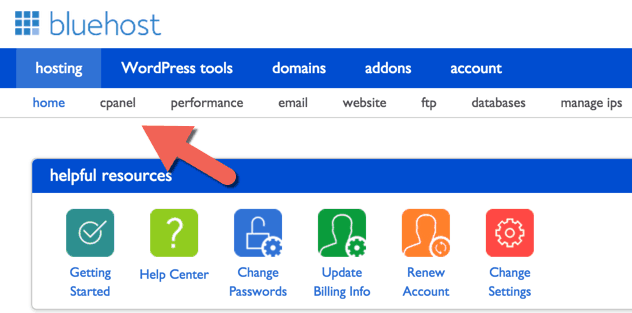
Scroll down to “website” and select “Install WordPress” from the list:
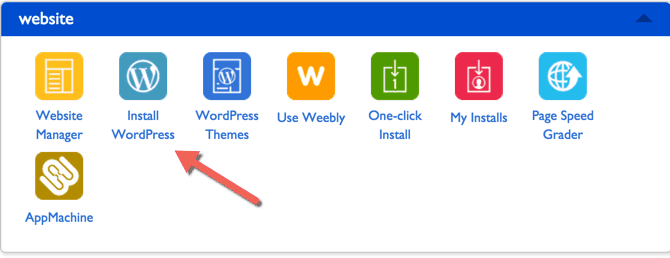
On the next screen, click on “Install”:
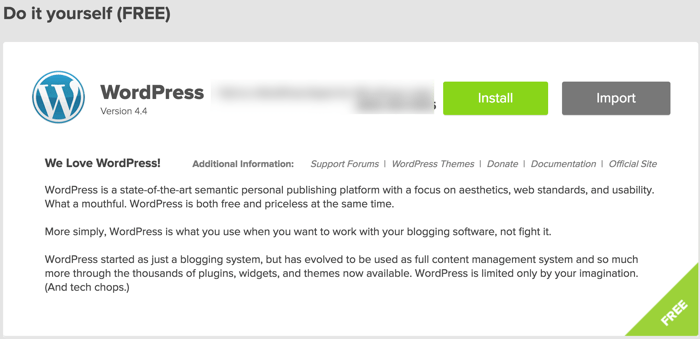
On the next page, select the domain on which you want to install WordPress:
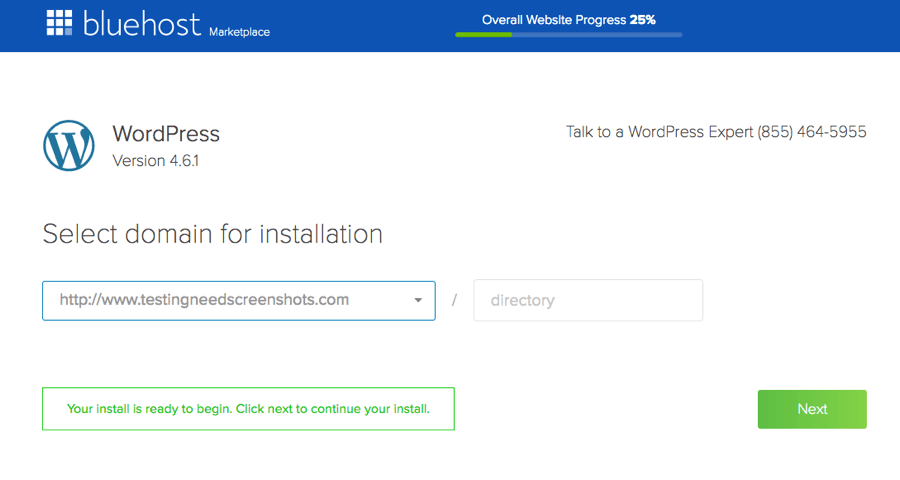
Note: Here you can decide if you want your domain to be with “www.” or without “www.” Nowadays, it’s all about shorter URLs, so I recommend selecting your domain without “www.” (you will get this option when you click on the dropdown),
Check that the domain is available, and click “Next”.
Click on “Show advanced options”:
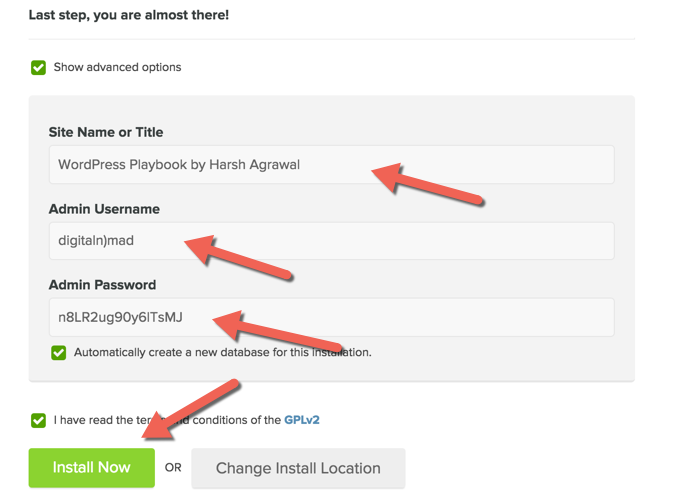
In this step, you can select your WordPress username and password for your login.
Important: Make sure you don’t select “admin” as the username. Instead, use some random username along with a complex password. Also, keep a check mark on “Automatically create a new database for this installation.”
Click on “Install Now” and WordPress will start installing.
The whole process should take about 1 minute.
Don’t close the page until you see the check mark and the words “Installation Complete”:

An email will be sent to the registered email address about the login and password information.
That’s it!
Create your WordPress blog on Bluehost (includes a free domain name)
Here is a video tutorial which will show you the exact process of installing WordPress on Bluehost:
Subscribe on Youtube
Things To Do After Installing WordPress On Bluehost:
Once WordPress is installed (on any host) there are a few things that you should always do.
This takes us to the next lesson in our series:
Let me know if you get stuck anywhere in the process. And let me know what you think about Bluehost. Share your thoughts and experiences in the comments below!
Here are a few more bonus articles to keep you inspired:
WordPress Plugins For Your WordPress Blog
Don’t forget to share this guide!

No comments:
Post a Comment